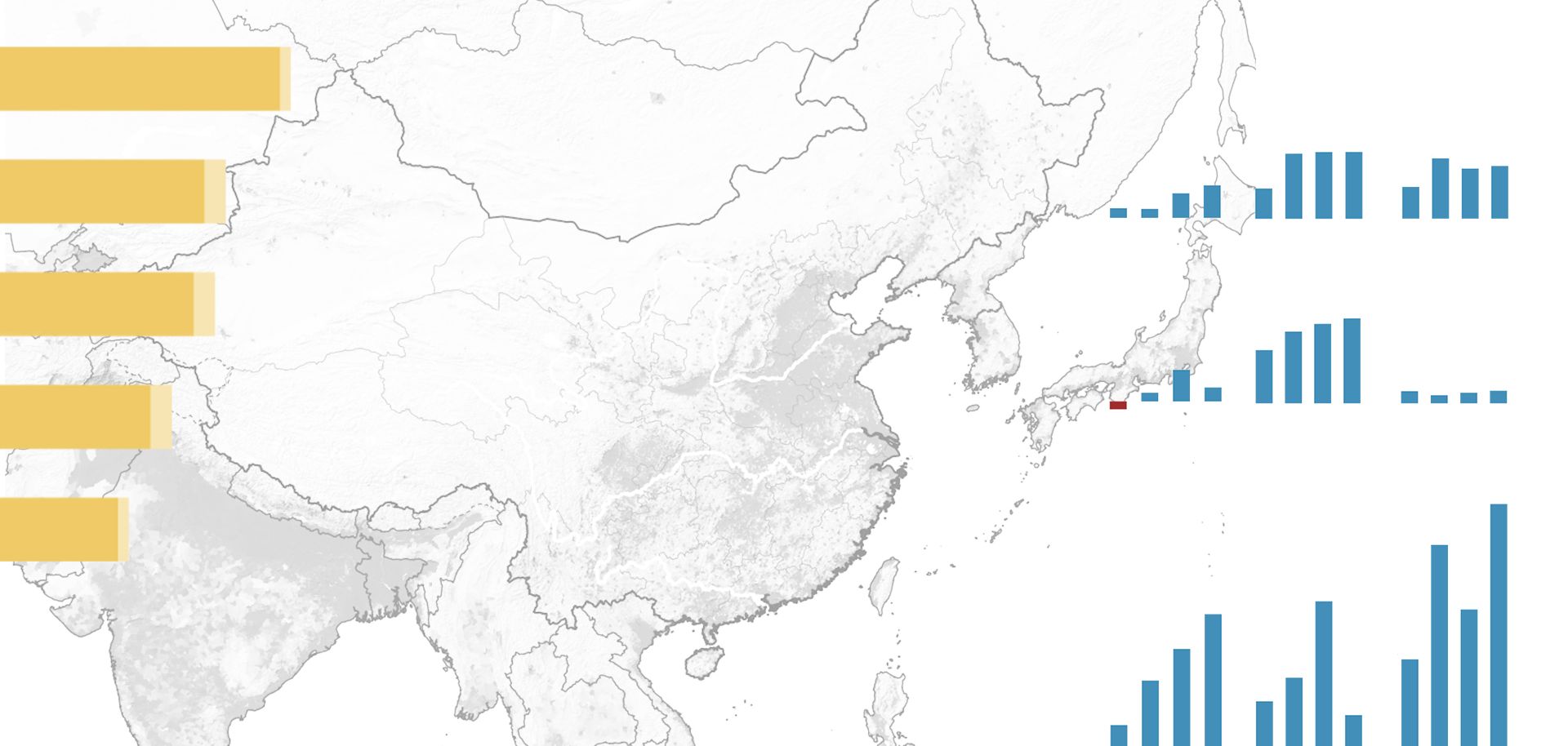
On July 12, the U.N. Permanent Court of Arbitration announced its decision in the Philippines' court case against China's claims in the South China Sea, ruling in Manila's favor. At the center of the court battle was the Scarborough Shoal and the Spratlys, scattered dots of land off the Philippine coast that lie in what Manila calls the West Philippine Sea. According to the Philippines, China illegally occupies seven landmasses in the Spratly chain as well as the Scarborough Shoal.
Manila's legal strategy centered on negating China's claims in the South China Sea, which partly rest on the assertion that the landmasses in question count as islands. The Philippines also asked the United Nations to uphold the 200-nautical-mile exclusive economic zone set forth by the terms of the U.N. Convention on the Law of the Sea (UNCLOS), upon which Manila claims China's nine-dash line demarcation impinges. The court's ruling sided with Manila on both issues, refuting Beijing's legal basis for the nine-dash line and for labeling the landmasses islands.
The 1994 UNCLOS agreement, often called the "constitution for the oceans," was intended to provide predictable, mutually agreed-upon definitions and mechanisms to settle maritime conflicts. Since all of the South China Sea's major claimants (with the exception of Taiwan) are parties to the agreement, UNCLOS should, in theory, solve any disputes that take place there.
But despite being a signatory to UNCLOS, Beijing has refused to accept the court's authority to issue a binding decision on the matter, for a number of logical reasons. For one, China already has a physical presence on many of the landmasses in question. More important, though, its clout in the Asia-Pacific region is growing, which gives Beijing the ability to exert pressure on its neighbors without having to use the U.N. framework. From Beijing's perspective, it opted out of binding arbitration in 2006 and thus has the right to choose another method of resolution — preferably through bilateral channels where it could leverage its regional might. (The United Nations denies this argument under Article 288 of UNCLOS, which grants the tribunal the power to decide whether a dispute exists and if its content is relevant.)
The court's decision will erode China's legal claims in the South China Sea. But that does not mean the ruling will translate into sweeping regional change. China is a powerful player in the Pacific and, in the end, physically possesses the landforms in its control regardless of what international law dictates. The United Nations, by comparison, has little influence in the Pacific Rim or ability to enforce its writ. Still, China's concrete options for reacting to the U.N. ruling will be limited.

One option would be for Beijing to renounce UNCLOS as a whole — and it has already threatened to do so. Renunciation however, would probably do more harm than good for China. A UNCLOS exit would not take effect until a year after Beijing's official renunciation, giving other South China Sea claimants considerable time to rush through last-minute cases against China. Moreover, China would still be subject to the court's ruling in the Philippines' case, and it would lose the ability to use UNCLOS for its own ends. Beijing has long been interested in mining the region's seabeds, something UNCLOS may assist with, and it is currently pursuing claims against Japan that rest on the convention's limits on the continental shelf in the East China Sea.
Instead, China will likely take the path of least resistance to maintain its current stance in the South China Sea, insisting that its interpretation of dispute resolution outside of UNCLOS is the correct one. Furthermore, Beijing will continue to pursue its own interests in the region — just as the United States will continue to try to stop it — while the weaker South China Sea claimants struggle to keep their maritime boundaries from closing in around them.



